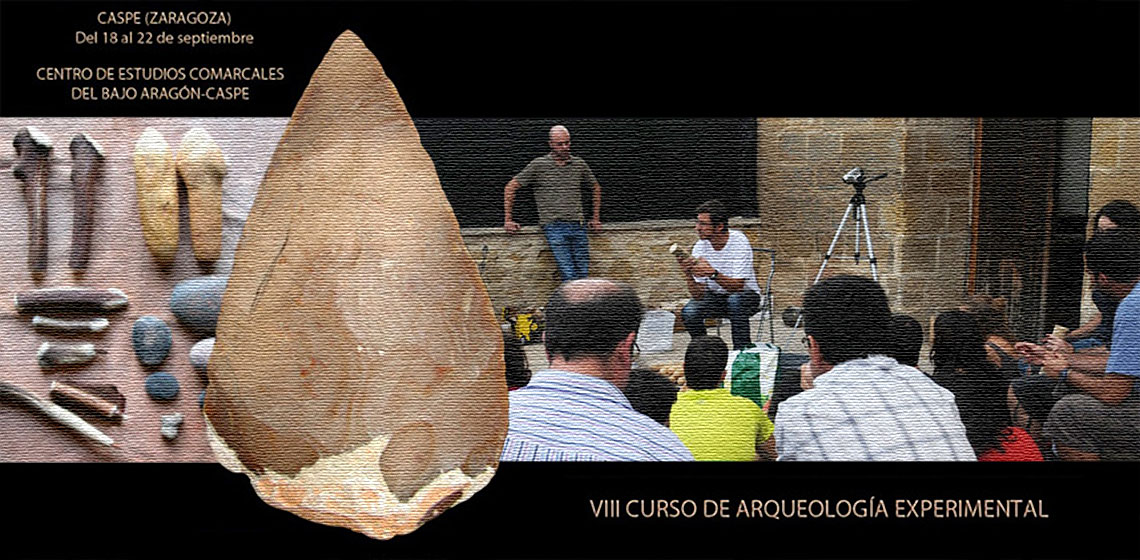
During the penultimate week of September a new Experimental Archaeology Workshop was held in the city of Caspe (Zaragoza, Sain). Organised by several institutions, including the Fundación Fernando El Católico, the City Hall of Caspe, the University of Zaragoza and the Diputación of Aragón, this was the eighth meeting in which thematic experimental courses were developed with the cooperation of experts from different Spanish and international high quality institutions. Subjects such as experiments in pottery, metallurgy, organic materials, have been the focus in past workshops; on this occasion lithic technology was the protagonist.
Caspe, 18 - 22 September 2012
Organisers: Carlos Mazo & Javier Fanlo (University of Zaragoza)
The programme included both theoretical and practical sessions where the evolution of technical and technological solutions was analysed and reproduced using lithic knapping experiences and experiments within a historical context. Over the four days, several speakers presented on these theoretical and practical issues:
Javier Baena (Thursday 18 September)
Theory
- Practical aspects of knapping: technique and technology
- First productions: sites and technical and technological studies
- Processes and techniques of knapping in modes I and II
- A discussion was made about forming closer ties to the EXARC organization in Europe.
- Mode III: concepts, methods and modalities.
Demonstrations and experiments
- Basic elements: tools and knapping techniques
- Direct percussion
- Ancient Palaeolithic technologies: Mode I: Unipolar sequences
- Mode II: Bifacial configuration and alternant sequences
- Mode III: Hierarchized sequences and methods during the Mousterian (discoid, quinine, Levallois, blades with hard percussion)
Antoni Palomo (Wednesday 19 September)
Theory
- Blade production in the northeastern peninsula from the fourth millennium to the third millennium cal BC
- Knapping processes and techniques Demonstrations and experiments
Demonstrations and experiments
- Indirect percussion in the blade productions of fourth millennium cal BC: The case of La Draga Neolithic site
- The bipolar on anvil technique
- Blade production with direct wood and antler soft hammerstones
- Blade production with indirect percussion
- Preparation of cores using blade flakes and blocks
- Blade production with mineral and wood hammerstones
Mikel Aguirre (Thursday 20 September)
Theory and demonstration
- Pressure retouching procedures in time and space
- Methods and techniques
- Experimental practice and related sites
Demonstration and experiment
- Pressure experiments
- Introduction to pressure blade technology
- Blade pressure production and pressure retouch
Antonio Morgado (Friday 21 September)
Theory and practical demonstration
- La tecnología laminar especializada de la Prehistoria Reciente de la Península Ibérica (High pressure blade technology from Late Prehistory of the Iberian Peninsula)
Jacques Pelegrin (Friday 21 – Saturday 22 September)
Theory and demonstration
- Knapping techniques demonstration
- Practical recognition of the knapping technical stigmata
The gathering of more than 25 students from several Spanish universities in a very friendly context provided an excellent forum for practical and theoretical discussion with the experts. The satisfaction of the participants and the strong feedback of information indicate that a future lithic workshop will be needed.